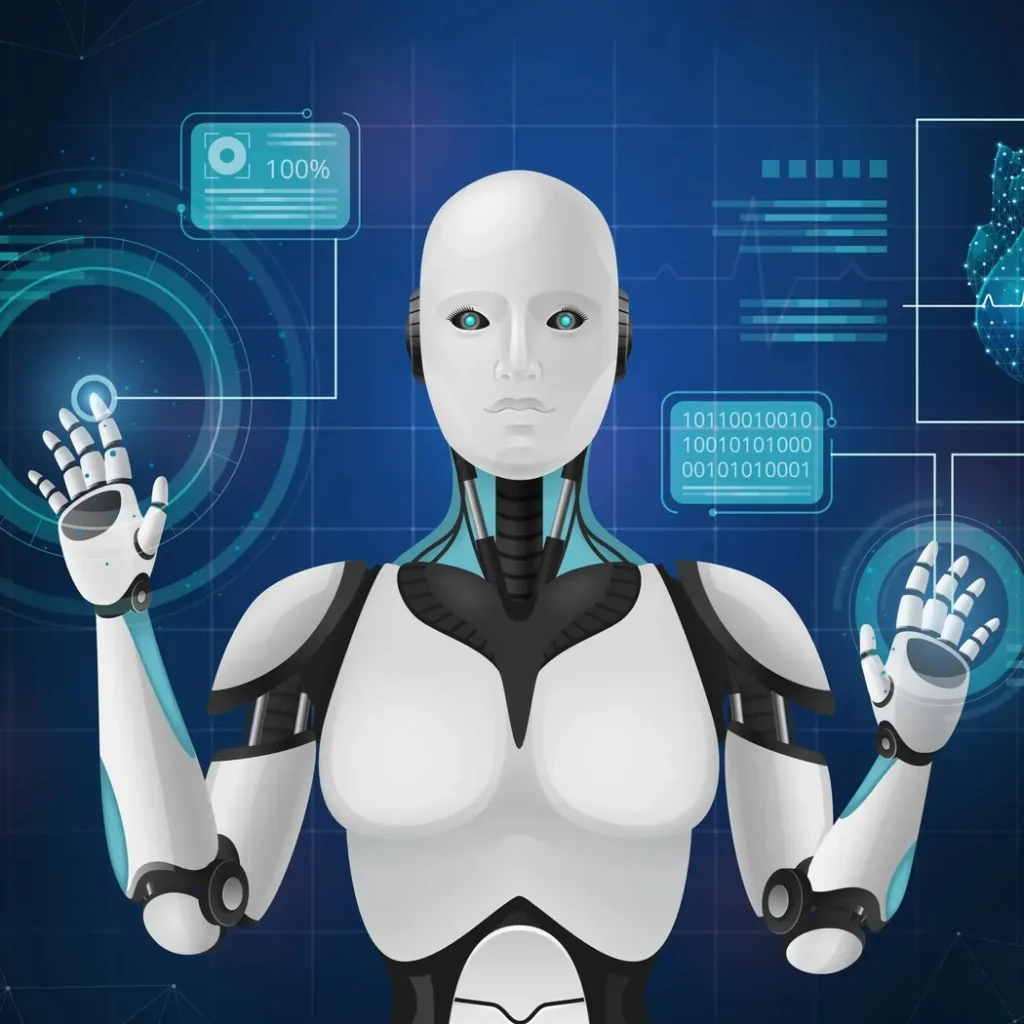The year 2024 marks a pivotal moment in the evolution of Generative AI (GenAI), with OpenAI’s Chat-GPT leading a transformative wave that is reshaping industries and redefining white-collar professions. As businesses navigate the rapidly changing landscape of AI technology, from the imminent release of GPT-5 to the strategic adoption of Artificial Intelligence (AI) capabilities, the intersection of education and industry becomes increasingly crucial.
This introduction sets the stage for exploring key advancements, challenges, and opportunities in the dynamic realm of GenAI, where collaboration between academia and corporations is essential for navigating the complexities of the AI-driven economy.
Table of Contents
Key Points
GenAI’s Impact: GenAI, led by OpenAI’s ChatGPT, is reshaping industries and white-collar professions, with studies showing significant boosts in productivity and quality of work.
GPT-5 Advancements: OpenAI is set to release GPT-5, expected to enhance generative potential and contextual reasoning, paving the way for more human-like interactions and progress towards artificial general intelligence (AGI).
Strategic Adoption: Businesses should strategically adopt AI, focusing on workforce reskilling, data infrastructure, and cybersecurity to leverage AI’s transformative potential while addressing organizational challenges.
Shift to Smaller Models: The generative AI landscape is shifting towards smaller, open-source models, allowing for niche specialization and faster innovation, particularly in personalization, supply chain optimization, and customer service.
Education-Industry Collaboration: Universities and businesses must collaborate to prepare graduates for the AI-driven workforce, emphasizing interdisciplinary skills and partnerships to meet evolving job market demands.
The Evolution of Generative AI
In the wake of the revolutionary emergence of generative artificial intelligence (GenAI), the landscape of technology and business has undergone a profound transformation. As we delve into 2024, the impact of GenAI continues to escalate, permeating various sectors of society and reshaping traditional paradigms.
GenAI’s Influence Across Industries
Initially pioneered by OpenAI’s ChatGPT in late 2022, GenAI has swiftly gained momentum, with startups and tech giants alike vying to harness its capabilities. OpenAI remains at the forefront of this movement, boasting over 100 million weekly users and a staggering 92 percent adoption rate among Fortune 500 companies.
The Academic Validation of GenAI
Academic studies, such as those conducted by Harvard University, the University of Pennsylvania Wharton School, and MIT, have provided empirical evidence of GenAI’s efficacy. Research shows that consultants equipped with GenAI tools exhibit significantly improved performance, completing tasks more efficiently and delivering higher-quality results.
Anticipating GPT-5: The Next Leap in AI Evolution
The imminent release of OpenAI’s GPT-5 promises to further revolutionize the landscape of AI. With advancements in generative potential and contextual reasoning, GPT-5 heralds a step closer to artificial general intelligence (AGI), albeit still reliant on quantum computing platforms for robust implementation.
2024: A Year of Strategic Implementation
As we navigate through 2024, businesses are poised to strategically integrate AI into their operations. The focus shifts towards thoughtful workforce reskilling, data infrastructure enhancement, and cybersecurity reinforcement to align with AI needs and mitigate associated risks.
The Paradigm Shift: From Large Models to Specialized Multimodal AI
A notable trend in 2024 is the shift towards smaller, open-source, multimodal AI models. These models, combining text, images, and video, enable niche specialization, fostering innovation and accelerating advancements in various business operations.
Integration of AI into Enterprise Software
Enterprise software providers are expected to integrate AI capabilities directly into their products, democratizing access to transformative AI technologies. This integration empowers businesses to leverage AI within familiar software tools, gaining sustained competitive advantages.
Navigating the AI Transformation: Strategies for Success
McKinsey estimates the substantial economic contribution of GenAI by 2030, underscoring the importance of cautious scaling and organizational readiness. Companies must undergo fundamental changes to fully capitalize on AI’s benefits, focusing on prudent AI adoption and workforce upskilling.
Challenges in Workforce Management
The advent of GenAI poses challenges in workforce management, prompting businesses to reassess their approach to retaining employees amidst efficiency gains. Ethical considerations, financial implications, and employee well-being emerge as critical factors in decision-making.
Harnessing AI Skills in New Graduates
The influx of AI-skilled graduates in 2024 reshapes the workforce landscape, with a focus on interdisciplinary education and AI collaboration. These graduates, equipped with AI fluency and a penchant for innovation, represent a vital resource for businesses navigating the AI revolution.
The Convergence of Education and Employment Ecosystems
The symbiotic relationship between higher education and industry underscores the need for collaboration in preparing AI-savvy graduates. Partnerships between universities and corporations are advocated to meet evolving talent needs and foster a skilled workforce.
Adapting to Change: Strategies for Success
Embracing a culture of openness and continuous learning is paramount in navigating the dynamic landscape of AI. Businesses must foster information-sharing, invest in employee training, and leverage diagnostic tools to enhance their AI readiness and capabilities.
Embracing the GenAI Economy
As we embark on the second year of GenAI’s prominence, businesses and universities alike must adapt to the transformative potential of AI. Embracing GenAI offers unparalleled opportunities for efficiency, innovation, and competitiveness, paving the way for a thriving GenAI economy in 2024 and beyond.
Read More Articles
- Why Cyber Security is Essential: Exploring 5 Key Reasons
- Astra Space’s Financial Struggles: A Close Brush with Bankruptcy
- Introducing the Xogdor Rocket to the Military Realm
- The Formation of the LEO Owner Operators Affinity Group
- Expanding Satellite-to-Smartphone Connectivity
- Navigating Privacy and Safety in Adult Webcam Streaming
- Choosing Between Open Source and Proprietary LLMs
- Rethinking Food Packaging for a Sustainable Future
- Mastering Typography in Web Design
- Exploring Typography Trends for Digital Design in 2024
- Unlocking Sustainable Economic Growth Through Innovation
- Navigating the Financial Landscape of Executive Education and MBA Programs
- Understanding Information Technology: The Backbone of Modern Business
- Understanding Algorithms: Definition, Functionality, and Real-Life Applications
- Understanding Machine Learning: A Comprehensive Exploration
- Unlocking the Power of Machine Vision: Revolutionizing Industries
- Unlocking the Power of Expert Systems: Enhancing Decision-Making with AI
- Unlocking the Power of Natural Language Processing
- Unlocking the Secrets of Artificial Intelligence
- Optimizing Logistics with AI: Revolutionizing Efficiency in Package Routing
Frequently Asks Questions
What is generative AI?
Generative AI refers to artificial intelligence systems capable of generating new content, such as text, images, or even music, that resembles human-created content.
How does generative AI work?
Generative AI works by using large datasets to learn patterns and generate new content based on that learning. Models like GPT (Generative Pre-trained Transformer) utilize deep learning algorithms to understand and produce human-like text.
What are some applications of generative AI?
Generative AI finds applications in various fields, including natural language processing, content creation, creative design, virtual assistants, and data augmentation.
What is GPT-5?
GPT-5 is the fifth iteration of OpenAI’s Generative Pre-trained Transformer model. It represents a significant advancement in generative AI technology, with improved capabilities in language understanding and contextual reasoning.
How does GPT-5 differ from previous versions?
GPT-5 is expected to showcase enhancements in generative potential, language understanding, and cognitive abilities, moving closer to achieving artificial general intelligence (AGI).
How is generative AI transforming industries?
Generative AI is revolutionizing industries by automating tasks, enhancing productivity, enabling personalized experiences, and facilitating innovation in content creation and decision-making processes.
Can generative AI replace human creativity?
While generative AI can mimic human creativity to a certain extent, it is not yet capable of replicating the depth and complexity of human creative expression. However, it can augment human creativity by providing inspiration and generating ideas.
What are the ethical implications of generative AI?
Generative AI raises concerns about intellectual property rights, misinformation, bias in generated content, and the potential for misuse in creating deceptive or harmful content.
How can businesses leverage generative AI?
Businesses can use generative AI for content generation, customer service automation, market research, product design, and personalization to streamline operations and improve customer experiences.
What are some challenges in implementing generative AI?
Challenges include data quality and availability, algorithm bias, ethical considerations, privacy concerns, and the need for continuous monitoring and improvement to ensure the reliability and integrity of generated content.
Is generative AI capable of understanding context?
Yes, advanced generative AI models like GPT are designed to understand context by analyzing surrounding text or data to generate responses or content that is contextually relevant.
Can generative AI be used for storytelling?
Yes, generative AI can be trained to create narratives, scripts, or storytelling content by learning from existing examples and generating new sequences of text that follow narrative structures.
How can generative AI benefit content creators?
Generative AI can assist content creators by automating repetitive tasks, generating ideas, providing inspiration, and enhancing the efficiency of content production processes.
What is the future of generative AI in education?
Generative AI has the potential to revolutionize education by personalizing learning experiences, creating interactive educational content, and facilitating adaptive tutoring systems tailored to individual student needs.
How does generative AI impact job roles?
Generative AI may automate certain tasks traditionally performed by humans, leading to job displacement in some areas but also creating new opportunities in AI-related fields such as AI engineering, data analysis, and AI ethics.
What are some examples of generative AI in everyday life?
Examples include language translation services, chatbots, virtual assistants like Siri and Alexa, content recommendation algorithms, and image or video synthesis tools.
Can generative AI be used for scientific research?
Yes, generative AI can assist scientists by analyzing data, generating hypotheses, simulating experiments, and predicting outcomes in fields such as healthcare, chemistry, astronomy, and climate science.
How does generative AI contribute to innovation?
Generative AI fosters innovation by enabling rapid prototyping, idea generation, and exploration of diverse design possibilities in product development, creative arts, and scientific research.
What safeguards are in place to prevent misuse of generative AI?
Regulatory measures, ethical guidelines, transparency requirements, and responsible use policies are being developed to mitigate the risks of misuse and ensure accountability in the development and deployment of generative AI technologies.
What role does collaboration play in advancing generative AI?
Collaboration between researchers, industry stakeholders, policymakers, and ethicists is essential for advancing generative AI responsibly, addressing challenges, and maximizing its potential benefits while minimizing risks.


